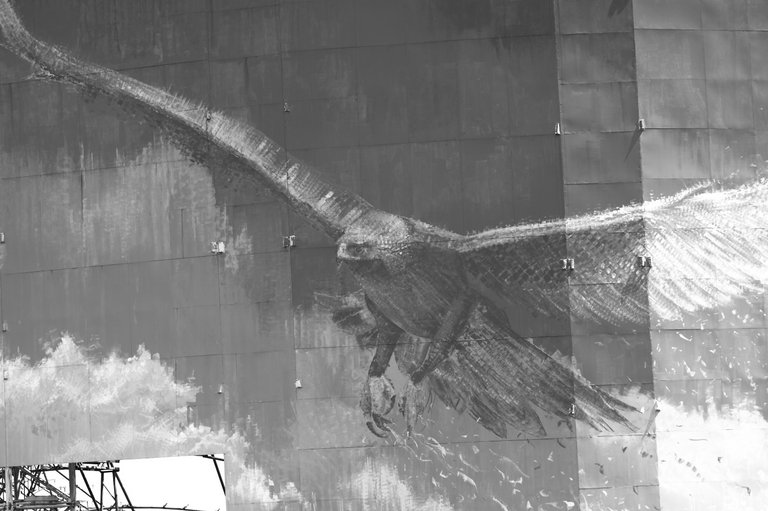
Yesterday I wrote about my attempts to discover and explore the Radio-Optical Telescope (ROT-54) in the mountains of Armenia. This was a particularly difficult challenge, one in which I relied heavily on the drone in attempt to find the place, and still somewhat failing. I mentioned in that post that there was a way around the mountain that required walking through a village and some little obstacles in order to get there. In the last post, I primarily shared some drone photographs of the location and from afar. These posts are from the mirrorless camera, all from being on foot, walking through the area and finding a way in. I wanted to start the post off with the most remarkable feature that appeared from this angle: an artwork that was displayed on one of the location's 'space mirrors'. All painted in blue, to the point where you could see the strokes, but displayed to an audience of zero. The only way you could see this was to be on the land, to walk behind the entire place and directly behind the building. I had never seen anything like this, and it was clear that this was a feature added decades before, nothing modern or added by vandals or nearby graffiti artists. The scale was simply too perfect, too large.
If the views walking around the mountain hadn't already impressed you, this certainly would. And it instantly gives the feeling of being in the space of something truly impactful. Deep in the mountains, surrounded by the nature, a mixture of science and humanity's intent to explore beyond the Earth and into the stars. With nobody being around and the entire area being of decay, it felt so strange to be there in the presence of something that had such meaning. You look up at the art, the hawk flying through the mountains, and look around at the decay, witnessing nature's reclaiming of the space over time. But it's a bittersweet feeling. On one hand the environment was experienced during the walk around the mountain, on the other hand is the collapse of man's pursuit to look beyond what's beneath the feet. No longer looking above with such pursuit. We're going a little backwards with this post, so stick with me on some mixed aspects of storytelling.
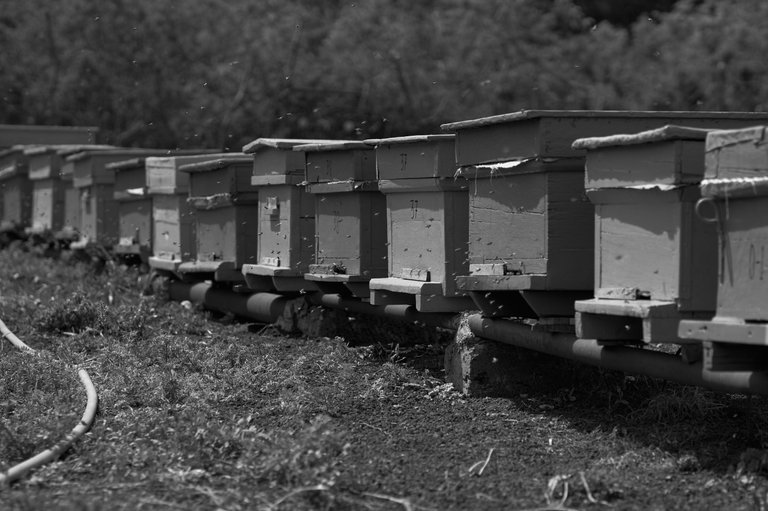
It was about 4PM and the sun from the top of the mountain was starting to feel a bit relentless. With no real expectation to find a way to ROT-54, no food or water was taken from the car. Overgrowth all over the side of the mountains, rocky landscapes and plenty of wildlife to be heard. A small village sat opposite by the church. Talking to a farm boy, the question of whether there was a way around was asked, to which the answer was yes, alongside the fact that it might be met with some difficulty. It was easier than expected, and my initial idea was to instead just find the wall around the location and follow that; surely that'd be the best idea instead of specific pathway that might not be found here. A little more up ahead was a family that were keeping bees. Hives in endless rows one after the other. The surrounding space was met with an intense humming. I got a bit closer than I really should have, and snapped a photograph. Swarms of bees covered the space, as did their noise. Walking around them was not really a possibility, for they had found great enjoyment in the nearby fields due to the pollen available from the natural landscape. The ground was muddy from the rain before, a little swampy. The bees coated this area. But there wasn't really a way around them. The solution was simply to hope for the best, to walk through it all quickly and hope nothing got agitated at your presence.
Fortunately there were no problems. Nothing decided to sting. They went about they way as our feet landed by them in the surrounding mud. Out of that area, it was nothing but tall grass. My next thought was to be glad that I wore my boots for this day and not my thin Converse, for I had the intentions of walking through debris in the abandoned buildings, not fields. I was cautious of ticks, scorpions, spiders, and the snakes. Everything natural that could've caused harm in tall grass. Things I never had to worry about back home in England. But that desire to push forward remained.
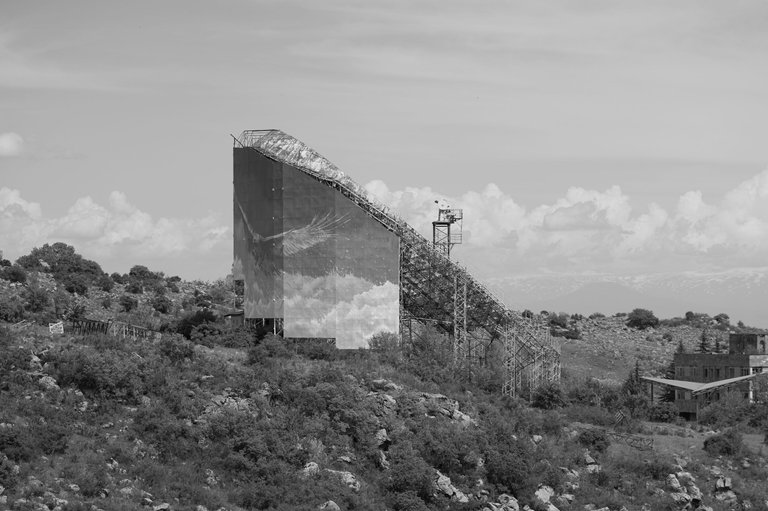
Things would slowly come into view, and the pathway alongside the wall was found. From there it was a simple walk, and it was clear that the farmers nearby had been using this route for their cattle. Giving them walks through the mountains on those warm summer's days. This had already been seen numerous times on the drive up the mountain, and the expectation to see more was still there. Footprints in odd shapes dried in the mud, rocks everywhere from the mountain above. It wasn't the most enjoyable walk, and it was one that you'd expect to roll and ankle on. I almost did a few times, particularly as I overlooked the drop to the right. A huge crack in the middle that split these two parts of the mountains apart. An odd waterfall coming from next to the main dish through out water still. I have no idea what it was used for, whether it collected water for the area or just contributed to the natural flow of things. Part of me assumed it was added and supported to cool down any equipment that was once active. That's just a guess though and I have no idea how any of this works. Though it is clear that it was added alongside the rest of the features here. Moving up and down the landscape alongside the wall, nature did decide to display itself a little more. A small snake beneath out feet appeared out of nowhere, slithering off into the cracks of the wall.
From that point it was clear that we were a bit isolated. In an area in which we should be a bit more careful. Looking down at our feet with every step and less at what we were walking towards and through the lenses of cameras. That was the first time I had seen a snake in the true wild before. I had seen them in the garden in England as a child, but those were tiny grass snakes. Nothing like this. Though I suspect this one was still a baby, for it didn't have a whole lot of length just yet, and was definitely more afraid of us than one might assume a snake about to be stepped on might typically be.
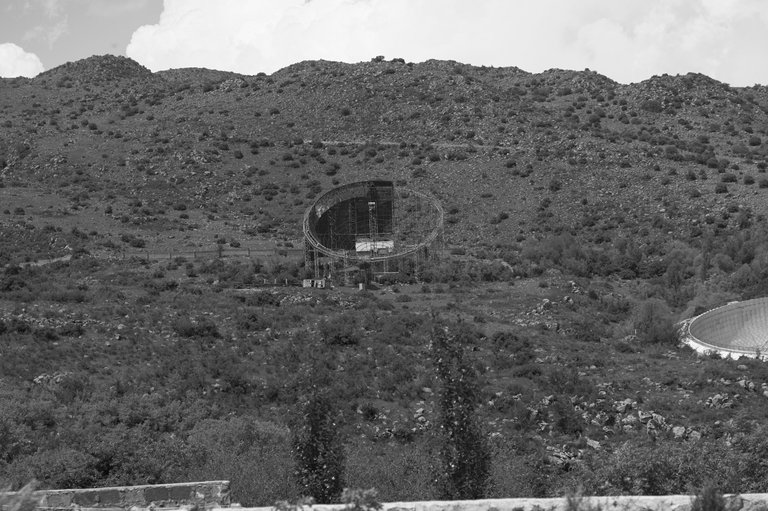
From that point on the realisation of what we were doing was starting to kick in. Could this place be guarded? Am I being safe enough walking around the mountains in this heat with no food, no water, and barely any phone connection? But I can't help it. I'm the type of person that needs to explore, to experience the unknown. The desire to press on outweighed the feelings of fear. And the closer objects became, the larger they suddenly were, the more I knew I wanted to reach the location. I had to photograph this place more. I had to document it and experience something so historically fascinating. Mixed with the urban exploration of finding a place so hidden and secretive, potentially full of little items and signs of the past. And to have something so close, yet seeming so far, with the previous parts of the day being an attempt to merely find where it was; there was no turning back at this point. I had the 85mm on the camera at this point, with the 35mm packed away in case I wanted to use it for interior shots. The 85mm allowed me to photograph some of the area from afar, from the other side of the mountain, capturing the sheer size of some of these features. You don't quite capture the scale of it all with the drone, with it being so high up.
There were no other close encounters with snakes in the end. Nothing more got into the way of our attempts to get to the telescope. Upon arriving there, it felt surreal. I had no words. A mixture of sadness with that aforementioned rejection of our interests in space, and some happiness that I had managed to find and experience something like this. Never would I have thought I'd be in the mountains of Armenia stumbling across the Soviet Union's space interests.
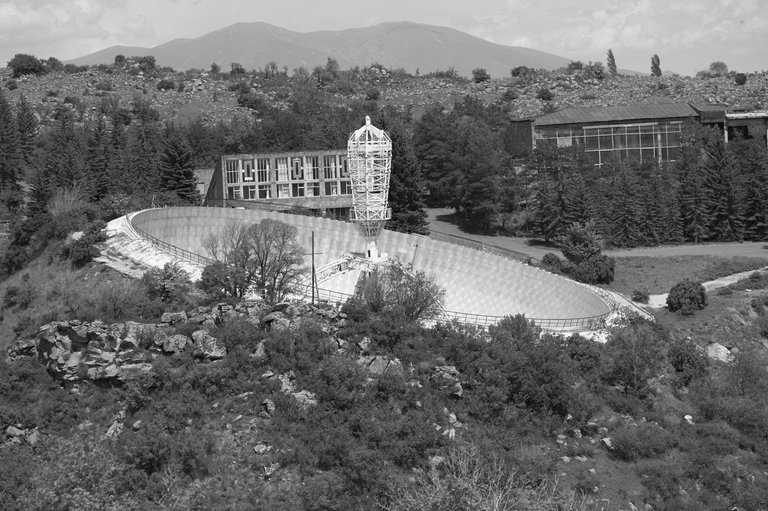
Here is the best image of the dish I have. It was unfortunately a bit too windy for the drone at this point, though I intend to return to the place on another day and really explore it. It's a place that really deserves to have its story told, to be remembered and protected. Perhaps I can attempt to do something similar here on Hive with that next visit. More videos, more photographs, more research into what this place did and when.
It's more interesting to see these views of pictures you took of the radio optical Telescope environment...this is so great!!
Congratulations @namiks! You have completed the following achievement on the Hive blockchain And have been rewarded with New badge(s)
Your next target is to reach 31000 upvotes.
You can view your badges on your board and compare yourself to others in the Ranking
If you no longer want to receive notifications, reply to this comment with the word
STOPCheck out our last posts: